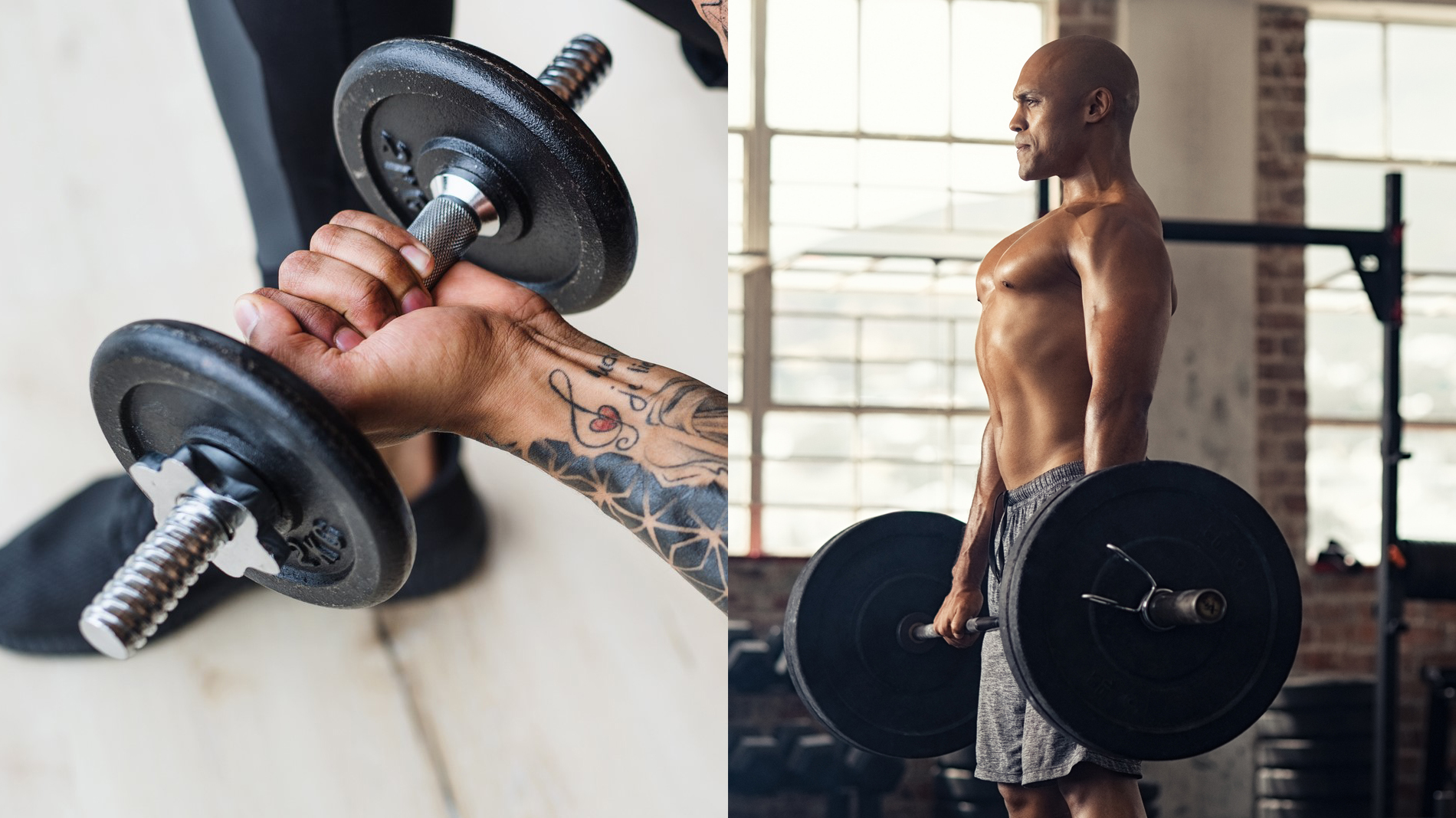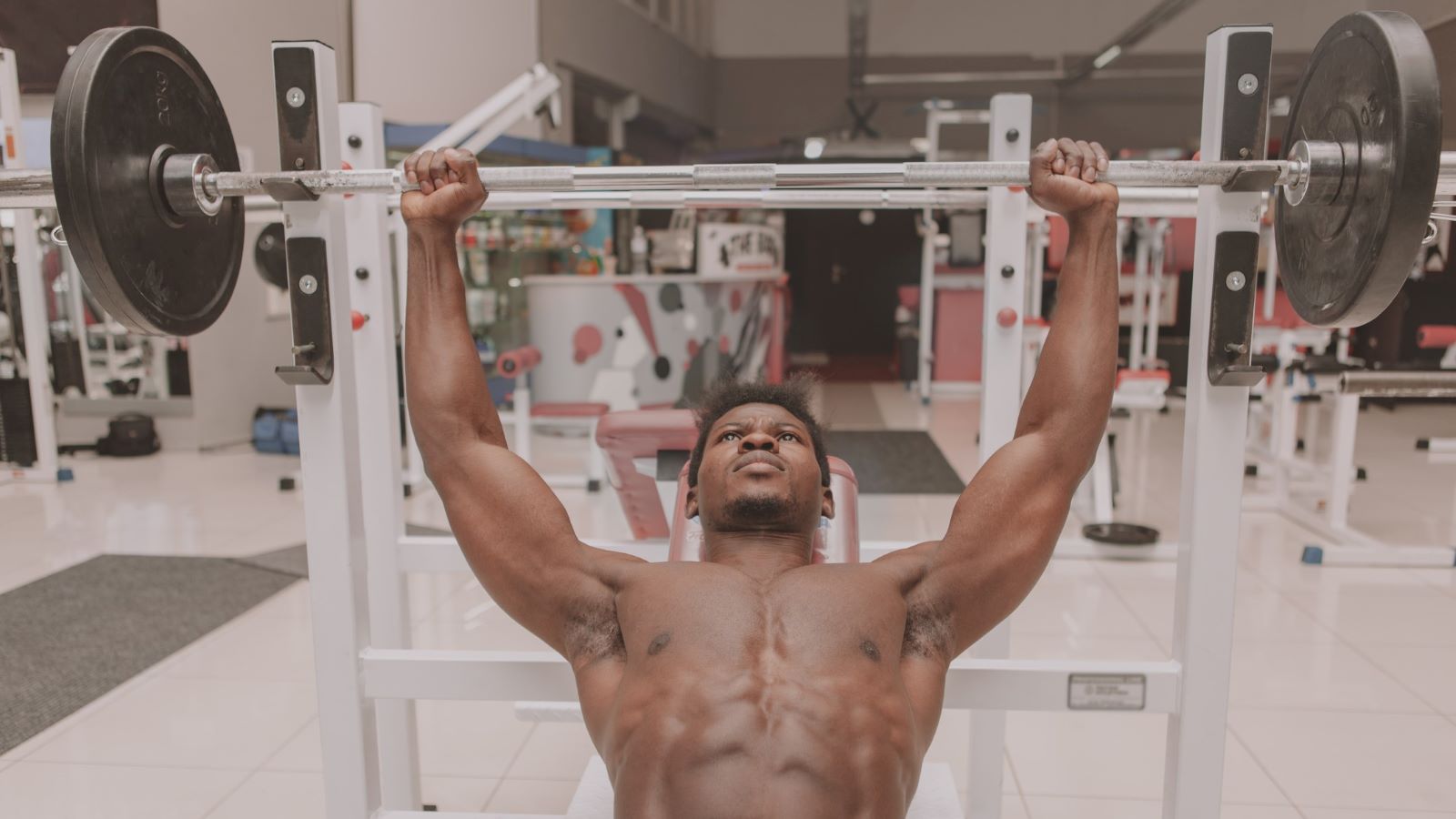

Dumbbell vs barbell: which is best for full-body workouts? Given the lack of space many of us have at home, you may well be unable to fit both, so you need to decide: should you buy the best dumbbell or the best barbell for your home gym? What is the difference between the two home weights? And which one builds muscle quicker?
One might argue that it doesn't matter what type of weight you use to build muscle. So long as you are persistent in your efforts and keep on working out, results will show eventually. However, barbells and dumbbells have different benefits, as discussed below.
For functional training, we recommend the best kettlebells; working out with this type of home weight generally burns more calories which is better for weight loss and boosts metabolism. Still not sure whether you should get a dumbbell or a kettlebell? Learn the difference between dumbbells vs kettlebells today!
Finally, if you're planning on getting a decent barbell, you'll also need weight plates. Without bumper plates, barbells are just long metal rods. Think about it.
Three reasons why dumbbells are better than barbells
Dumbbells are probably the best type of home weights for most people. Most strength exercises that could be performed with a barbell can also be performed with a pair of dumbbells too. Better still, using dumbbells can introduce even more variety to your resistance training.
Reason #1: dumbbells are better for symmetry
Our body is the most fantastic machine that's also highly adaptable. This adaptability comes in handy in many situations, but not necessarily when you want to make sure the right muscles are worked during a workout.
Working out with a barbell, you will use a range of muscles in the body, all working together lifting the heavy weight. If your body decides that a muscle can't pull the weight, it switches on other muscles in the area to help out, hence why barbell work is the best way to build overall strength.
Get all the latest news, reviews, deals and buying guides on gorgeous tech, home and active products from the T3 experts
However, barbell workouts aren't so great when you want to make sure both sides of the body receive the same amount of resistance. When you lift a barbell, one side of your body will be dominant, working harder than the other. Over time, this slight difference can result in noticeably different sized muscles, especially if you are lean.
Using dumbbells, you can make sure both sides of the body are worked equally as hard; if the left side feels a bit stronger, you can always use slightly bigger weights on the right, eventually evening out the difference.

Reason #2: dumbbells are compact howe weights
There is no denying it: dumbbells take up less space than barbells, especially the adjustable variety, such as the excellent Bowflex SelectTech 1090i dumbbell. Assuming that you are not planning on getting a 50-piece strong dumbbell collection (that would set you back financially), storing a few dumbbells will always be more manageable than housing an Olympic barbell and bumper plates.
Dumbbell workouts also require less space. Even if you find a way to store the barbell and the weight plates vertically, when the fully-loaded barbell is on the floor or the squat rack, it will take up more space than a pair of dumbbells. Shoving dumbbells under the bed will always be less hassle than finding room for barbells at home.

Reason #3: dumbbells are versatile
There isn't an exercise that can be performed with a barbell and not with dumbbells. There are caveats, of course, but generally speaking, getting a pair of adjustable dumbbells will enable you to choose from a more extensive library of available exercises.
Take, for example, the bench press. You'll need a weight bench equipped with a weights rack to perform bench presses with a barbell. Even then, if the bench is not adjustable, you can only perform standard and close-grip bench press; that's pretty much it.
With a pair of dumbbells, you don't even need a weight bench to do bench presses: you can perform floor presses instead, lying on the floor. You can also do dumbbell pullovers, dumbbell flys and more without additional equipment.
Three reasons why barbells are better than dumbbells
Especially in recent years, barbells became more accessible and even more popular than before. Gone are the days when barbell meant the Olympic bar: nowadays, you can get EZ bars to work on the arms, trap bars that make deadlifts and shrugs easier, and a bunch of other types that cater for different types of workouts.
When used correctly, barbells are the ultimate weights to build full-body strength. And just because the dumbbell is more versatile, that doesn't mean barbells are not versatile in general. On the contrary.

Reason #1: better for building strength
Barbells are your ultimate weapons to get strong. The best barbell exercises, including the deadlift, barbell squats, overhead press and more, are known for building full-body power and making you Superman strong. Sure, you can deadlift and try weighted squats with dumbbells, but it's not the same.
Consider doing heavy bench presses – the best way to build a beastly chest. If you are an average-sized person, a heavy bench set could be 3-4 reps with 70-80 kg; that could mean holding a 35-40-kilo dumbbell in each hand. It's not impossible, but dumbbells that big doesn't make sense in most other situations.
Unless you have a beast of a chest already and can bench press that much, you won't be able to use those dumbbells in any other situation, whereas barbells can be made lighter by removing some weight plates.

Reason #2: barbells are especially good for building lower body strength
Both dumbbells and barbells are great for building massive shoulders, triceps, biceps and pecs. Heck, you can even work on the upper back using dumbbell rows. What dumbbells are not great for is building lower body strength.
If you want strong quads, round glutes and calves that pop, you'd better start working out with barbells today. When it comes to building leg definition, nothing beats weighted squats, deadlifts, glute bridges, etc. Barbells work way more effectively for these exercises than dumbbells.

Reason #3: barbells are better for compound exercises
The best full-body workout we know of consists of the 'Big 5', a sequence of compound exercises that use a multitude of muscles and build strength and definition. These exercises are deadlift, weighted squat, barbell bent-over row, bench press and overhead press.
Doing compound exercises has loads of benefits. They burn more calories than isolation workouts (you use more muscles), tend not to overload any muscle groups too much and are just better for building strength in general. By doing only these five exercises, you can work out pretty much every muscle in the body in the shortest time possible. Full-body workouts don't get more time and are more cost-effective than this.
This is part of T3's Fit for 2021 programme, which will be running throughout January, and is brought to you in association with our friends at Wiggle. We aim to bring you tips on diet, lifestyle and exercise that will help you shape up for what is certain to be a difficult year. One thing we can guarantee: it WILL be better than last year. And hopefully we'll help you get the most out of it.

Matt Kollat is a journalist and content creator who works for T3.com and its magazine counterpart as an Active Editor. His areas of expertise include wearables, drones, fitness equipment, nutrition and outdoor gear. He joined T3 in 2019. His byline appears in several publications, including Techradar and Fit&Well, and more. Matt also collaborated with other content creators (e.g. Garage Gym Reviews) and judged many awards, such as the European Specialist Sports Nutrition Alliance's ESSNawards. When he isn't working out, running or cycling, you'll find him roaming the countryside and trying out new podcasting and content creation equipment.


